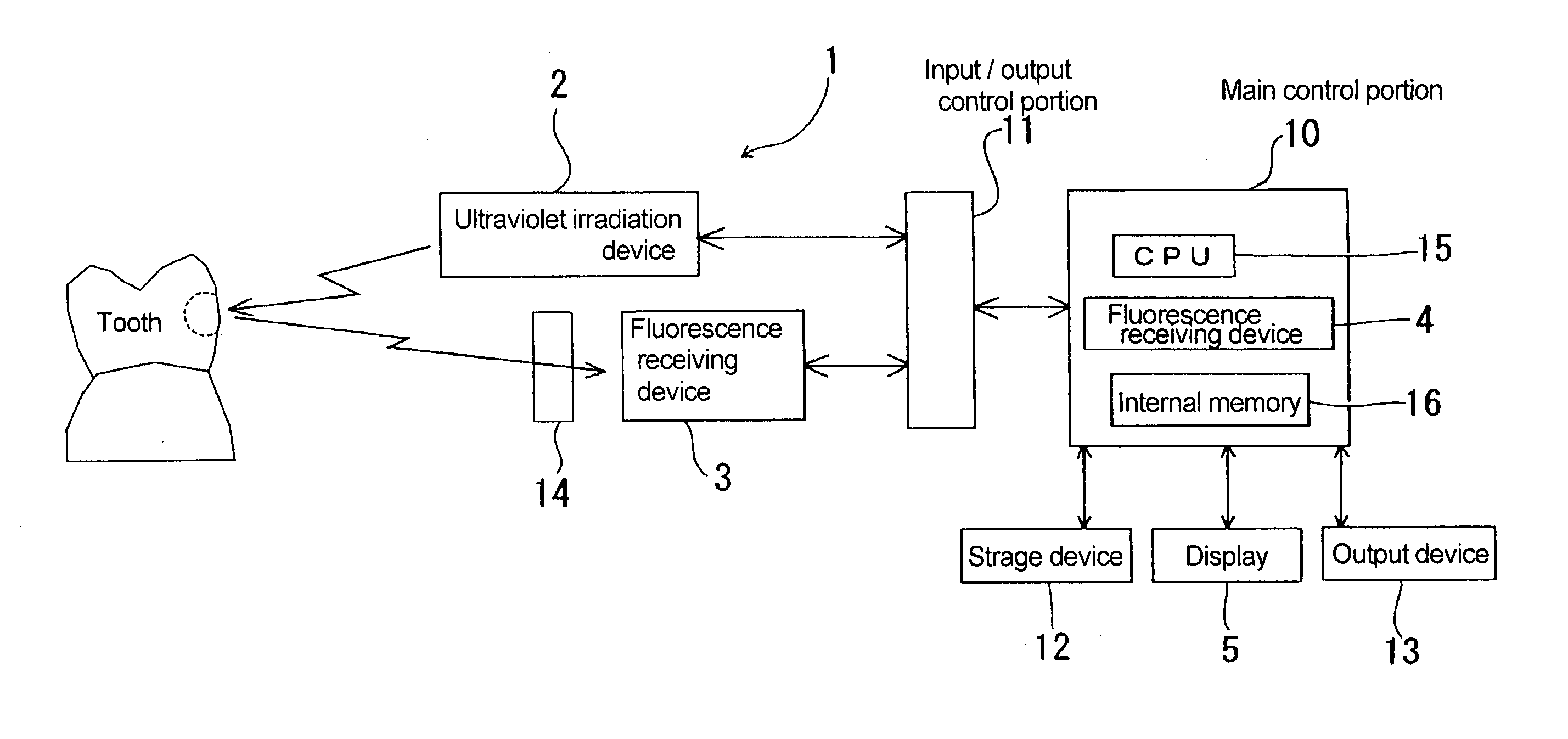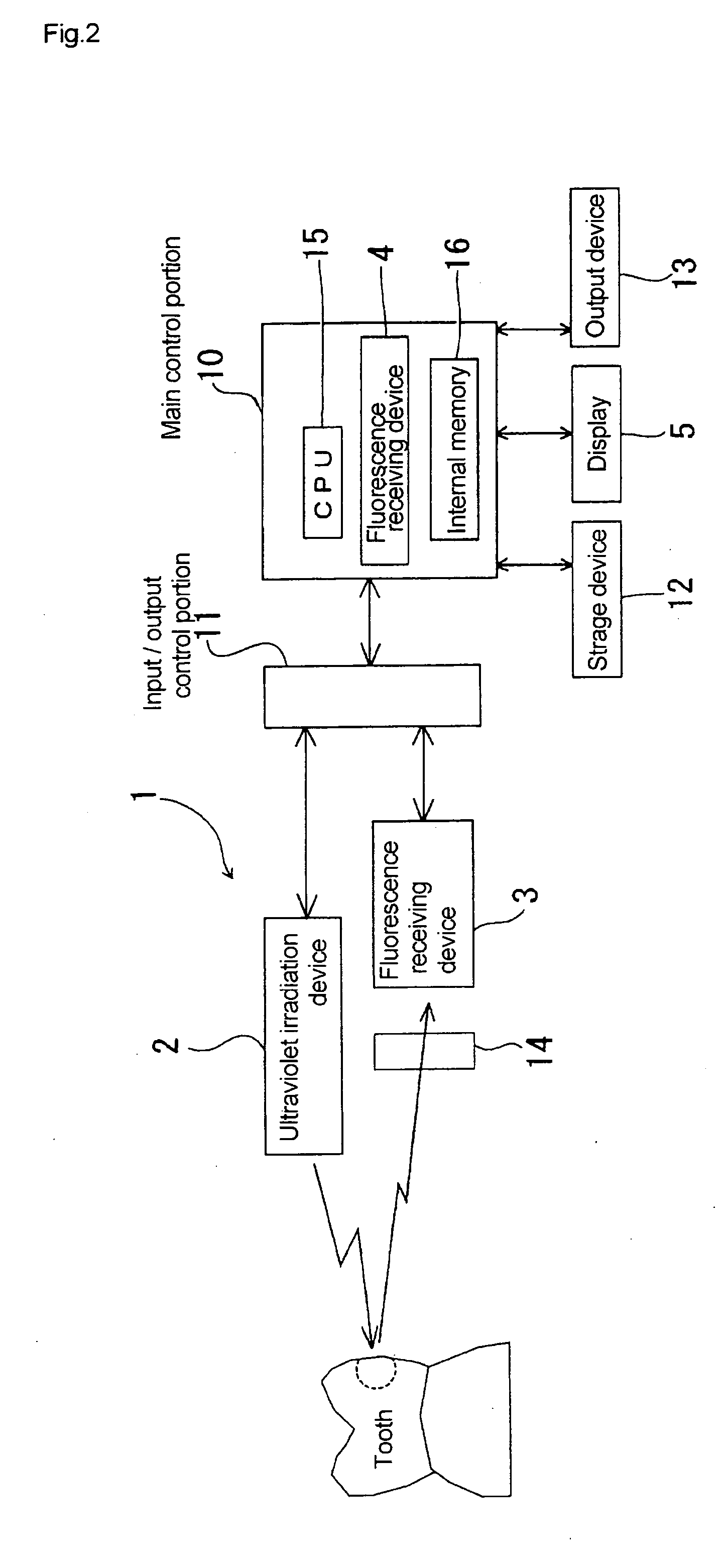Carious tooth detection device
a carious tooth and detection device technology, applied in the field of non-destructive detection of dental caries, can solve the problems of lowering detection sensitivity, difficult to accurately identify the presence/absence of primary dental caries using the device, and difficult to detect primary dental caries, etc., to achieve the effect of high sensitivity, easy to check the degree of recovery, and easy to appreciate the importance and effect of dental caries prevention treatmen
- Summary
- Abstract
- Description
- Claims
- Application Information
AI Technical Summary
Benefits of technology
Problems solved by technology
Method used
Image
Examples
example 1
[0122] In Example 1, according to the “measuring method using data obtained from a single location” in the dental caries detecting method according to the embodiment, the dental caries degree CD1 was calculated for the measuring areas L1, M1, H1, L1′, M1′, and H1′ of the light intensity U1, and the correlation coefficients between the dental caries degree CD1 and the mineral decreasing ratio were obtained.
example 2
[0126] In Example 2, according to the “comparison measuring method” among the dental caries detecting methods according to the embodiment, the dental caries degree CD2 was calculated for the measuring areas (L1, L1′), (M1, M1′), and (H1, H1′) of the light intensity U1 and the correlation coefficients between the calculated dental caries degrees CD2 and the mineral decreasing ratios were obtained.
example 3
[0130] In Example 3, according to the “light intensity change measuring method” among the dental caries detecting methods according to the embodiment, luminance changes (R1−R2), (G1−G2), and (B1−B2) and the dental caries degrees CD3 and CD4 were calculated for the measuring areas L2,1, M2,1, H2,1, L2,1′, M2,1′, and H2,1′ of the light intensities U1 and U2, and the correlation coefficients between the dental caries degrees CD3 and CD4 and the mineral decreasing ratios were obtained. The results of measuring according to Example 3 are given in Tables 6 and 7.
TABLE 6luminance change (340-94)mineralmeasuringdecreasingarearatio (%)R1-R2G1-G2B1-B2L2,1Dental caries11.214851527727821area(minor)M2,1Dental caries25.626071728330921area(moderate)H2,1Dental caries68.91046893116596area(severe)L2,1′Healthy area0−4432295530068M2,1′Healthy area0−26901932631399H2,1′Healthy area0−25142448523426correlation coefficient0.557−0.890−0.739with mineraldecreasing ratio
[0131]
TABLE 7Example 3(intensity change...
PUM
 Login to View More
Login to View More Abstract
Description
Claims
Application Information
 Login to View More
Login to View More - R&D
- Intellectual Property
- Life Sciences
- Materials
- Tech Scout
- Unparalleled Data Quality
- Higher Quality Content
- 60% Fewer Hallucinations
Browse by: Latest US Patents, China's latest patents, Technical Efficacy Thesaurus, Application Domain, Technology Topic, Popular Technical Reports.
© 2025 PatSnap. All rights reserved.Legal|Privacy policy|Modern Slavery Act Transparency Statement|Sitemap|About US| Contact US: help@patsnap.com



